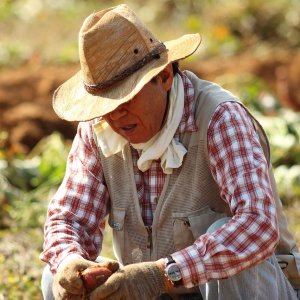Crop Protection: Molecules, Regulations, Technology

STORY INLINE POST
In the period between 1959 and 1999, the world’s population doubled from 3 billion to 6 billion. According to a report from the United Nations issued in July 2019, population growth is expected to increase from 7.7 billion currently to 9.7 billion in 2050.
This means that every year, 81 million people are born on this planet. They need to be fed and nourished, making this the biggest challenge that we as humanity have faced in our history.
As I have stated continuously, Syngenta is fully convinced that science and technology are the answer to finding ways to increase the amount of food and feed produced on the planet, while having a minimum impact on the environment. Growers around the world need to have every possible tool to help them deal not only with this challenge but also the effects of climate change. This is where we start sketching the future of the crop protection industry: What is our role as the main actors in this complex challenge? How can we contribute to remodeling the future of agriculture? How can we continue developing new molecules that are effective, safe and accessible for farmers around the world?
The Long Road to Discovery
Our research process begins with the discovery of molecules that have the potential to treat a disease caused by fungus, bacteria, virus or insects, weeds or that can make crops more resilient to environmental conditions. Our world-class scientists have to screen thousands of compounds that, after being tested to prove their safety for workers, the environment and consumers, qualify for evaluation for possible registrations to turn them into commercial products that a farmer eventually will have in his hands.
Each product undergoes extensive trials that involve more than a hundred studies per molecule, covering toxicology, metabolism, residues, ecotoxicology, physical-chemical properties and environmental impact. With this initial information, dossiers are completed. Each product is then ready to face local regulatory approvals (in case of Mexico, this is conducted by COFEPRIS, which is part of the Ministry of Health) to show they are in compliance with local laws and meet growers’ necessities.
Crop protection products are some of the most regulated products in the world, and the process that I just described takes about 10 years and US$250 million from beginning to end. Once one of our products reaches a Mexican growers’ hand to help he or she protect their crops, we are quite sure that we are delivering not only the best quality, but the safest tools for them, the environment and the final consumer.
Time for Action
As leaders in the research and development industry, we are entirely engaged in reducing the impact of agriculture on the environment while increasing yields. This is why as part of our second chapter of the Good Growth Plan, our global sustainability program, we committed to accelerating our innovation to provide solutions for farmers. Our target is to invest $2 billion in sustainable agricultural breakthroughs by 2025 and to deliver two sustainable technology breakthroughs each year. Reducing our chemical load in the environment is also part of this commitment and we are making that possible by developing innovative molecules that require a much smaller number of active ingredients per hectare to control a given disease, compared to the technologies developed in the past.
Also, we are complementing our offer to farmers through the incorporation into our family of Valagro, the industry-leading technology and research company in bio stimulants and bio controls, as well as its future pipeline of biological solutions. This will help us to offer Mexican growers the most complete and trustable portfolio for facing the enormous challenge of food production in such a complex world.








 By Javier Valdés | CEO for Mexico and North LATAM -
Mon, 04/19/2021 - 13:27
By Javier Valdés | CEO for Mexico and North LATAM -
Mon, 04/19/2021 - 13:27
















